Cover letter for teaching position template
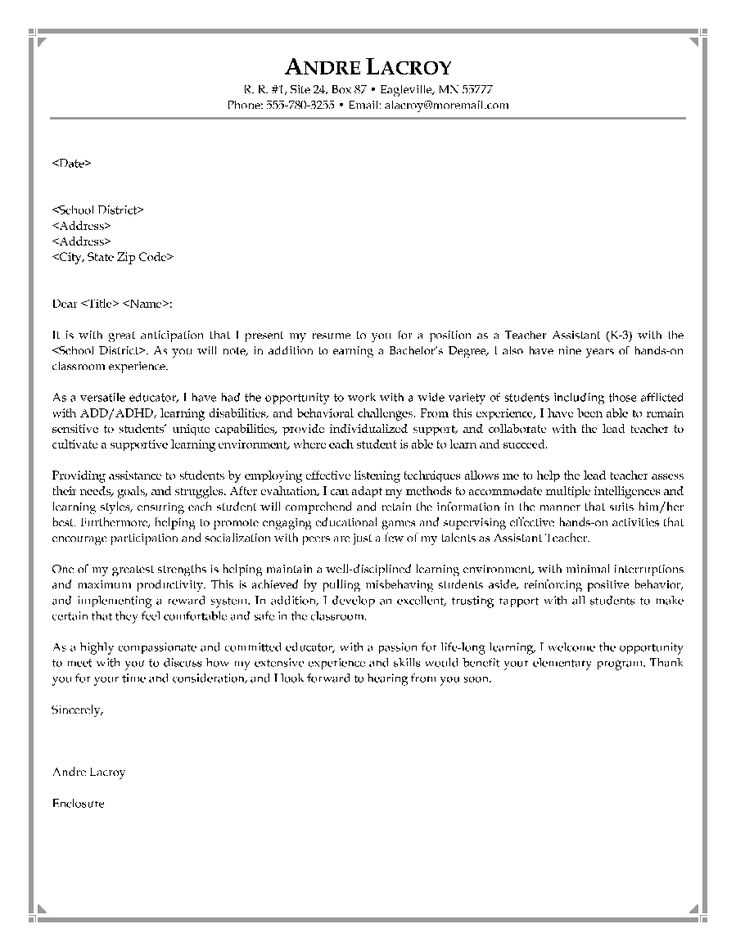
Begin your cover letter by directly addressing the hiring manager or principal, using their name if possible. This shows you’ve researched the school and makes your application feel personal. Mention the teaching position you’re applying for and express genuine enthusiasm for the opportunity to contribute to the institution’s mission.
In the opening paragraph, quickly outline your teaching experience, your passion for education, and why you are a strong fit for the role. This section should be concise and focus on your most relevant qualifications. A brief mention of your education and any certifications can be helpful here as well.
Next, highlight specific achievements or skills that make you stand out as a candidate. For example, share how you’ve implemented successful teaching strategies or contributed to a positive classroom environment. Use examples that demonstrate your ability to engage and inspire students, which will help strengthen your candidacy.
Conclude your cover letter by reinforcing your interest in the position and expressing your eagerness to discuss your application further. End with a polite call to action, such as requesting an interview or offering to provide additional materials upon request. Make sure to thank the reader for their time and consideration.
Cover Letter for Teaching Position Template
Start your cover letter with a strong, clear introduction that immediately highlights your qualifications and enthusiasm for the position. Mention the specific teaching role you’re applying for and how your skills align with the school’s values and needs.
Example Opening Paragraph
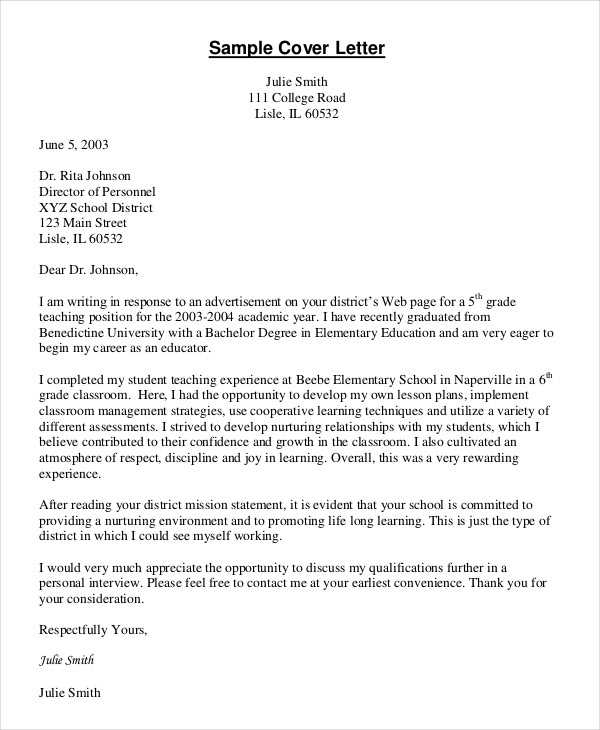
Dear [Hiring Manager’s Name],
I am writing to apply for the [Teaching Position] at [School Name], as advertised on [Job Board/School Website]. With a [Degree] in [Subject] and over [X years] of teaching experience in [Grade Level or Subject], I am excited about the opportunity to contribute to your team. My background in [specific area or teaching philosophy] makes me confident in my ability to engage students and create a supportive, dynamic learning environment.
Middle Paragraphs
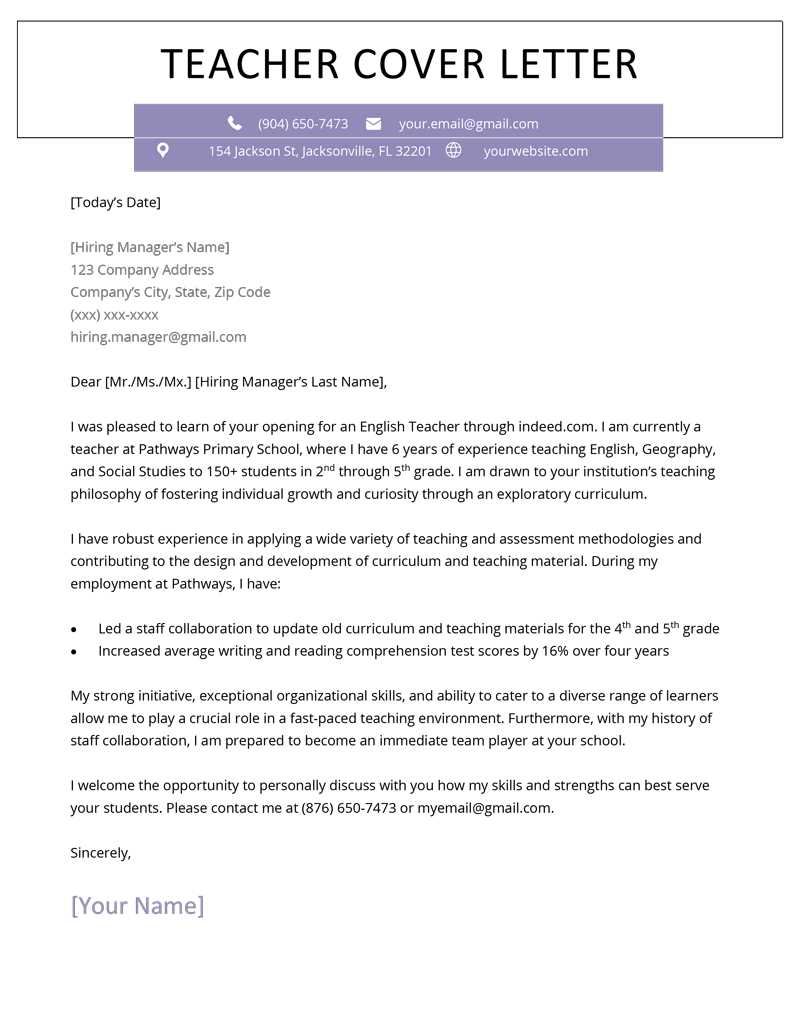
In this section, highlight your relevant experience. Describe your teaching methods, classroom management strategies, and any achievements. Include examples of how you have successfully implemented lesson plans or supported students in their academic growth. Tailor this part to the specific needs of the school or district, showing that you understand their unique environment.
| Key Skills | How They Apply to the Position |
|---|---|
| Classroom Management | Implemented behavior management strategies to foster a respectful and focused classroom atmosphere. |
| Curriculum Development | Designed and executed personalized lesson plans that align with state standards and students’ learning needs. |
| Technology Integration | Incorporated digital tools to enhance lessons and support differentiated learning. |
Be specific about how your teaching style benefits students. If possible, include measurable outcomes such as improved test scores, student feedback, or successful projects.
Closing Paragraph
In your closing, express your eagerness to discuss your qualifications in more detail. Mention your availability for an interview and thank the reader for considering your application.
I look forward to the opportunity to further discuss how my skills and experiences align with the needs of your school. Thank you for your time and consideration.
Sincerely,
[Your Name]
Addressing the Hiring Manager: Choosing the Right Salutation
Always use a formal salutation unless you are specifically instructed to use a more casual one. Begin with “Dear” followed by the hiring manager’s title and last name. If the name is unknown, opt for a general title like “Hiring Manager” or “Search Committee.” This shows professionalism and respect.
Personalizing the Salutation
If you know the hiring manager’s name, use it. Personalizing the salutation adds a touch of warmth and attention to detail. For example, “Dear Mr. Smith” or “Dear Dr. Johnson” is the best approach. Avoid using only the first name unless the job description encourages such informality.
When the Name is Unknown
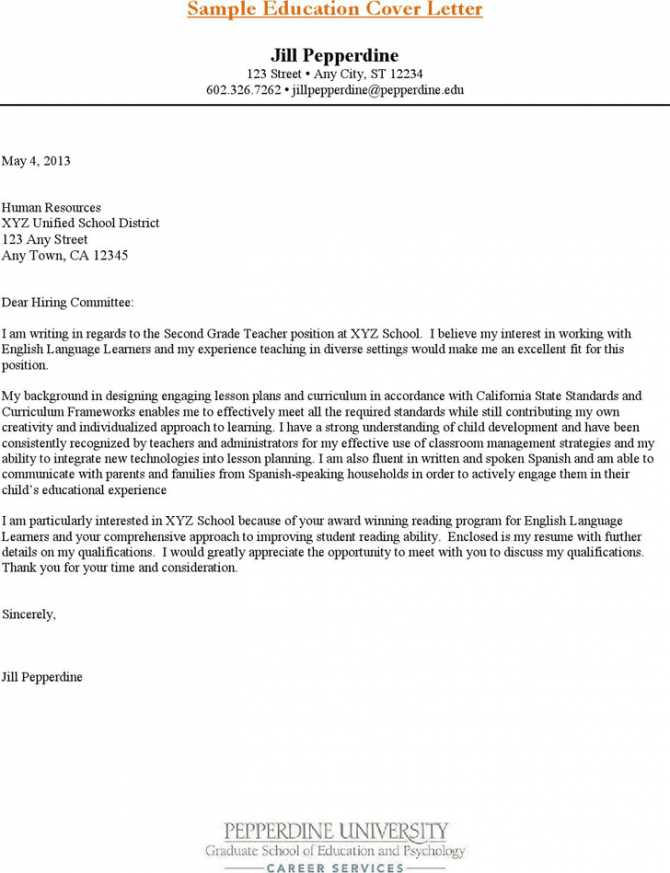
If the hiring manager’s name is not mentioned, avoid generic openings like “To Whom It May Concern.” Instead, use “Dear Hiring Manager” or “Dear [Company Name] Recruitment Team.” These are acceptable and professional alternatives when the specific name cannot be found.
Avoid using overly casual salutations such as “Hello” or “Hi” in a cover letter. They can make you appear unprofessional. Stick to the formal tone to leave a strong first impression.
Highlighting Your Teaching Experience and Skills
Focus on specific achievements that demonstrate your impact in the classroom. Mention teaching methods you’ve successfully implemented and how they’ve improved student engagement or outcomes. For example, if you created interactive lesson plans that led to higher student participation, state the percentage increase or specific improvements you observed.
Quantify Your Achievements
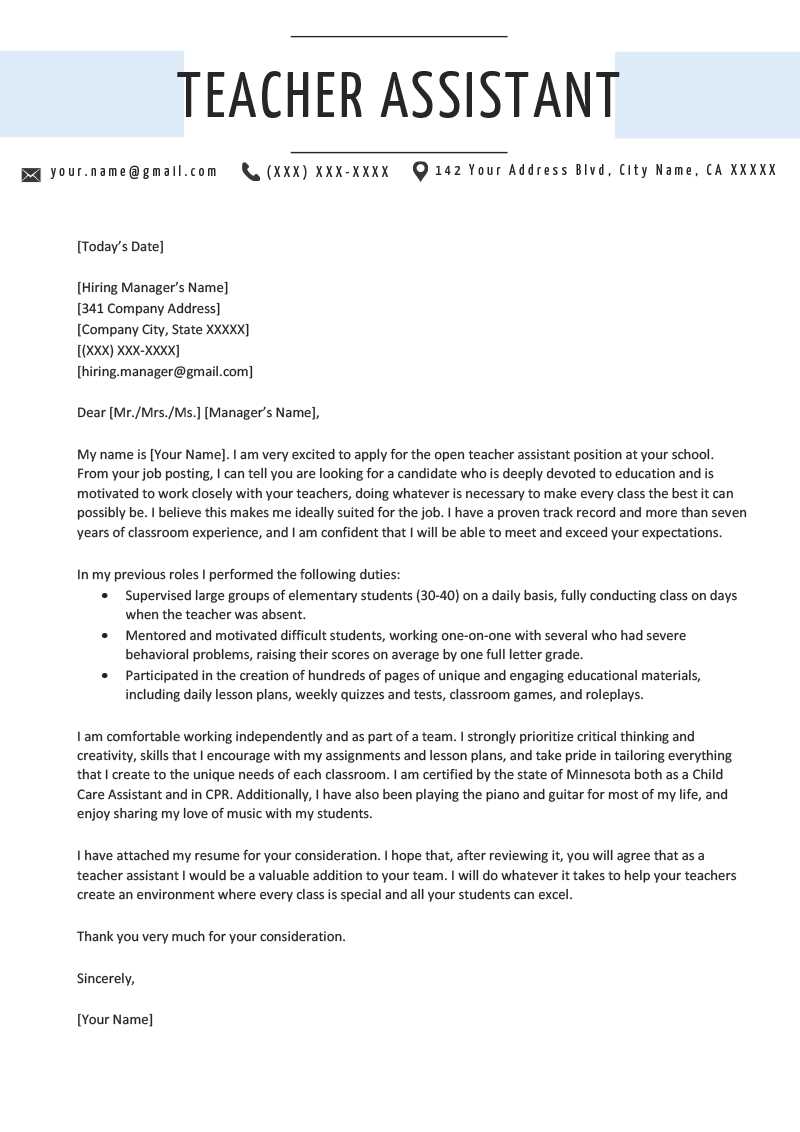
Use numbers to make your contributions stand out. For example, you could say, “I developed a reading comprehension program that resulted in a 30% improvement in students’ test scores over one semester.” This approach not only highlights your abilities but also shows measurable results.
Showcase Your Adaptability
Explain how you’ve adapted your teaching style to meet the needs of diverse learners. Whether it’s through personalized instruction or modifying materials for different learning styles, showcase your flexibility. If you’ve worked with students with special needs or English language learners, mention specific strategies you’ve used to ensure their success.
Highlight any additional training or certifications that demonstrate your commitment to professional development. If you’ve attended workshops or courses related to educational technologies or classroom management, list them as evidence of your ongoing growth.
Lastly, mention any collaborative projects or leadership roles you’ve taken on in the teaching community. Whether you’ve mentored new teachers or led professional development sessions, this shows your leadership and teamwork skills. These experiences highlight your ability to contribute to the broader educational community beyond the classroom.
Connecting Your Qualifications to the Specific Job Requirements
Tailor your qualifications to match the job description by highlighting the skills and experiences that directly address the requirements listed in the job posting. Start by identifying the key qualifications the employer is looking for, such as subject expertise, teaching experience, or specific teaching methodologies. Then, link your experiences and skills to these criteria in a clear and concise manner.
Highlight Relevant Skills
If the job emphasizes classroom management, mention your experience handling diverse groups of students. Discuss specific strategies you’ve used to maintain discipline and promote engagement. If the role requires familiarity with specific educational technologies, showcase your experience with tools or software that are relevant to the position.
Provide Concrete Examples
Back up your claims with examples. Instead of saying you have “strong communication skills,” describe a situation where you led a successful project, worked with students from diverse backgrounds, or facilitated a workshop that improved student outcomes. This approach gives your qualifications weight and demonstrates your effectiveness in real-world scenarios.
Demonstrating Passion for Education and Student Success
Show your commitment to student development by highlighting specific examples of how you’ve supported students’ academic and personal growth. Talk about the unique teaching methods you use to engage students and help them reach their potential.
Make it clear that you’re dedicated to creating an inclusive and motivating classroom environment. Mention how you adjust your teaching style to accommodate different learning needs and ensure every student feels supported.
Include measurable outcomes to demonstrate your success. For example, mention any improvements in student performance or feedback from students that highlight your positive influence on their learning experiences.
- Incorporate real-world applications to help students see the relevance of their education.
- Encourage active participation through group discussions, hands-on activities, or problem-solving exercises.
- Provide continuous feedback to guide students through challenges and celebrate their progress.
- Collaborate with colleagues to share effective strategies and further improve student outcomes.
Show that you view education as more than just teaching content, but also helping students build skills they will use throughout their lives. Share how you motivate students to become lifelong learners and actively engage with their communities.
Closing Your Cover Letter: A Strong Call to Action and Follow-Up
End your cover letter with a clear and direct call to action. Express your interest in discussing your application further and encourage the hiring manager to reach out. Use language that invites engagement, such as “I would welcome the opportunity to discuss how my skills align with your team’s goals” or “I look forward to the possibility of contributing to your school’s success.” This keeps the momentum going and signals your enthusiasm for the role.
Set the Stage for a Follow-Up
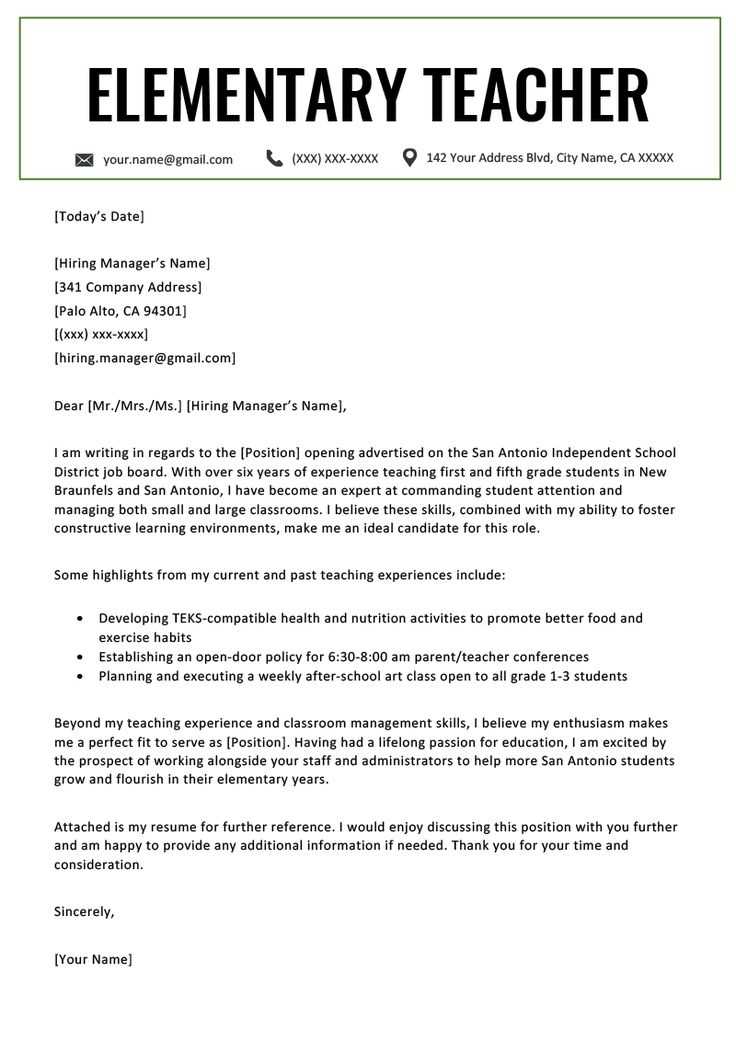
Reassure the hiring manager that you’ll follow up, but leave the timing open. For example, you can say, “I will reach out next week to follow up on my application,” or “I look forward to hearing from you and am happy to provide any additional information if needed.” This not only shows initiative but also gives the hiring manager a clear indication of what to expect.
Close with Gratitude
Finish with a brief, genuine expression of gratitude, such as “Thank you for considering my application” or “I appreciate your time and attention.” This leaves a positive impression, showing professionalism and respect for the hiring process.